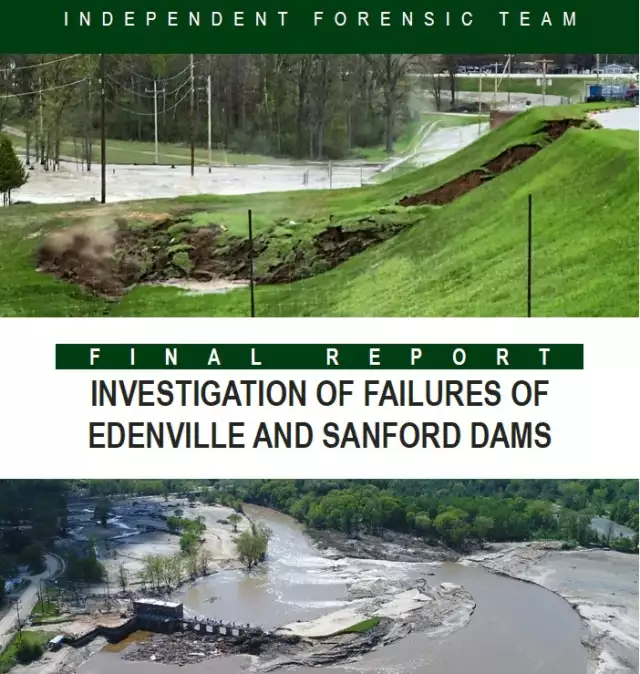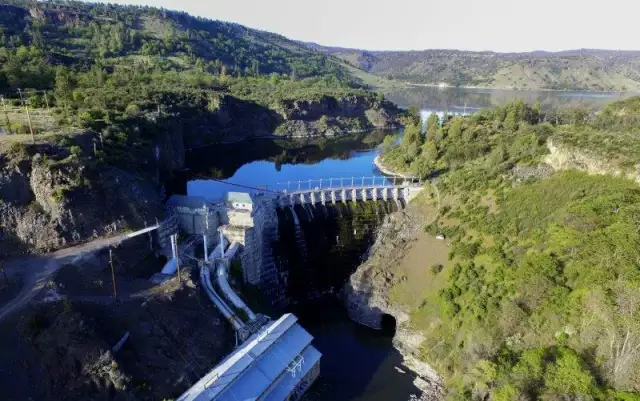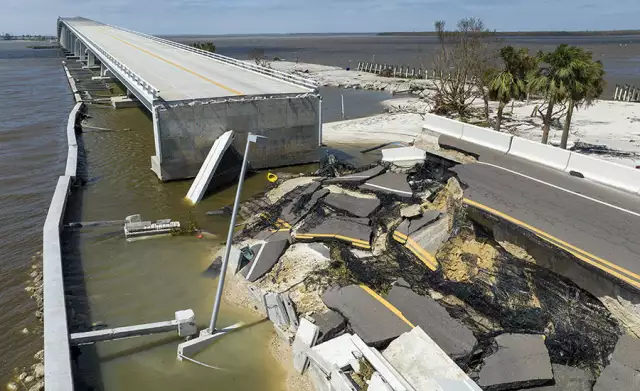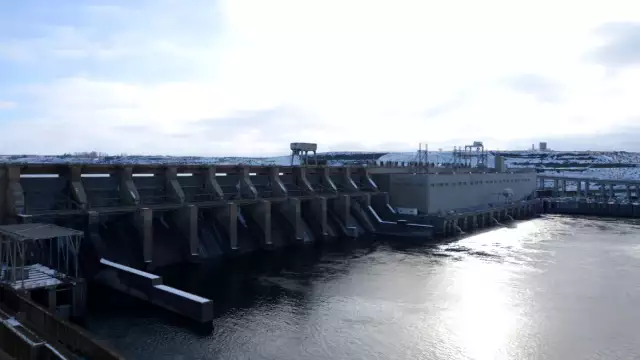Report: Michigan Dam Collapses Caused by Rapid Liquefaction of Embankment
Report: Michigan Dam Collapses Caused by Rapid Liquefaction of Embankment
May 19, 2022 Jeff Yoders KEYWORDS dam safety / dams / water Order Reprints No Comments
A final report from an independent forensic team investigating the May 2020 collapse of the Edenville and Sanford Dams in north central Michigan confirmed that the failures of the two dams built in the 1920s was caused by static liquefaction (flow) instability of saturated, loose sands in the downstream section of their embankments.
The dams, along the Tittabawassee River in north central Michigan, failed on May 19, 2020, after two days of heavy rain, resulting in flooding. No one died or was injured, but the the failures of the dams forced the evacuation of tens of thousands of residents and caused hundreds of millions of dollars’ worth of damage.
"The extent to which the numerous contributing factors combined and aligned to result in the failure primarily reflects both deficiencies in the construction of Edenville Dam and deficiencies in subsequent industry practices during the history of the project,” the report said.
Static liquefaction occurs when the mobilized shear strength in saturated, loose sand decreases rapidly to values significantly less than the applied static shear stresses, resulting in a force imbalance. According to the report, the Edenville Dam saw its sand embankment quickly liquefied, turned to mud that then accelerated the velocity of the already fast-moving water with its mass. The downstream Sanford Dam quickly failed when faced with the force of the saturated water and mass of the failed Edenville Dam sections that rushed its way after the initial collapse.
The five-member team was picked by the Federal Energy Regulatory Commission, the agency charged with regulating both dams, with input from the Association of State Dam Safety Officials. It was led by John W. France — a registered professional engineer who has worked for the U.S. Dept. of the Interior, Bureau of Reclamation, the U.S. Army Corps of Engineers, BC Hydro, and Brookfield Renewable Energy. The owner of the dam, Boyce Hydro, had not used either dam for generating electricity since 2018 when their generation licenses were pulled by FERC as part of an ongoing dispute about who would pay for upgrades and rehabilitation of the dams -- Boyce Hydro or local residents.
The final report reiterated an interim finding that inspections done by the FERC or by ownership would not have likely looked at downstream embankment static liquefaction as a potential cause of future failure.
The "lessons learned" section of the report, however, states that "static liquefaction instability failure should be considered as the potential failure mode for water storage or flood management dams when saturated or potentially saturated, loose or very loose sands, silty sands or nonplastic silts are present in the embankment or foundation of the dam. The challenge for water dam engineers now is to develop procedures and protocols to screen and evaluate static liquefaction potential and determine when risk reduction actions to address this PFM are appropriate."
It also said developing procedures and protocols should be done by leveraging the work that's been done on the issue of static liquefaction by tailings dam practitioners. Tailings dams are usually used in mining.
The report calls for more comprehensive reviews of dams by both FERC and state officials. The ongoing dispute about who would pay for rehabilitation of the aging dams was cited in the report as a reason for inaction by both Boyce Hydro and the local residents, but not as a reason, itself, for the failures. A sale of the dams was pending when the collapse happened. Boyce Hydro's decisions as owner were further scrutinized. The report said it was "plausible" that if a partial Edenville Dam spillway capacity upgrade had been constructed before May 2020, the resulting reduction in the lake level rise might have been sufficient to prevent the dam embankment instability failure in May 2020. It also notes that "the inherent risk of an embankment instability failure under some future high lake level, albeit for a rarer storm, would have remained unless the Edenville left (east) embankment was modified."
The report states that the Boyce Hydro projects did not provide sufficient revenue to support a $5-million to $10-million probable-maximum flood spillway upgrade project.
ASDSO currently estimates that needed rehabilitation/upgrades of the more than 88,000 non-federal dams in the U.S. would cost over $75 billion, including about $24 billion for more than 15,000 non-federal high hazard potential dams.
"Many of those rehabilitation/upgrade needs are not being met because of owners’ lack of financial resources. Although some state and federal financial assistance programs exist, the available financial resources are only a small fraction of the need," the report states.






